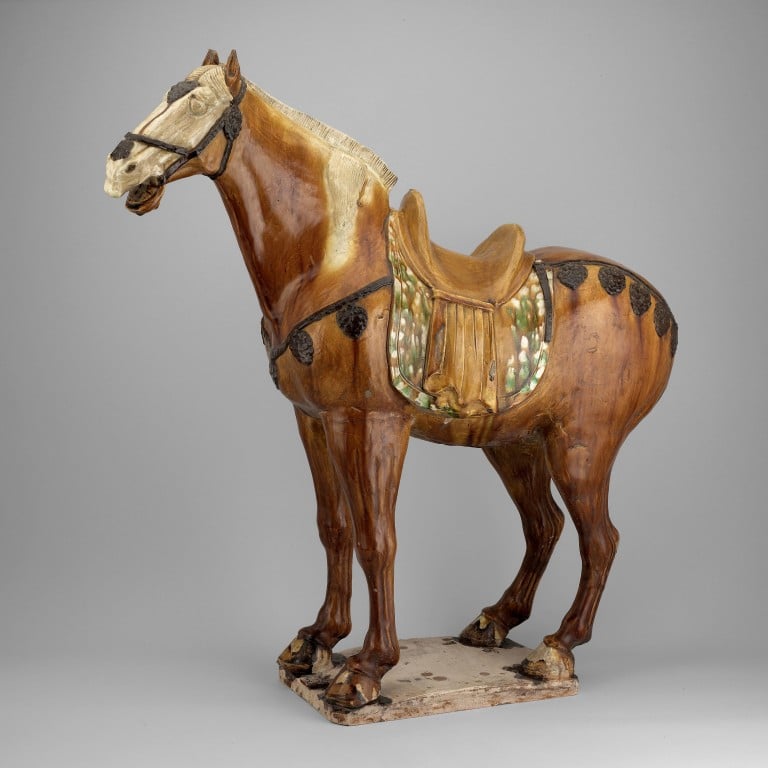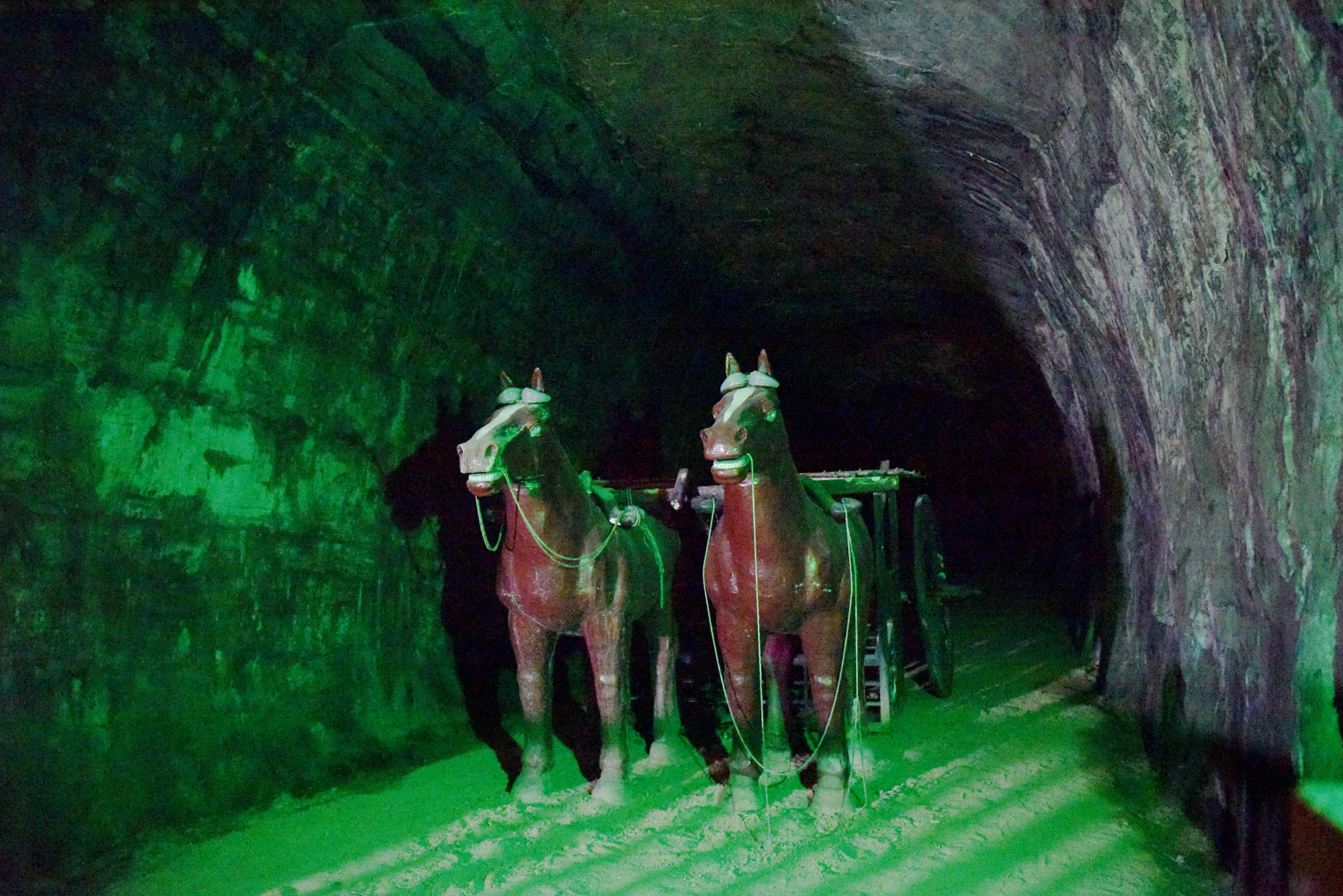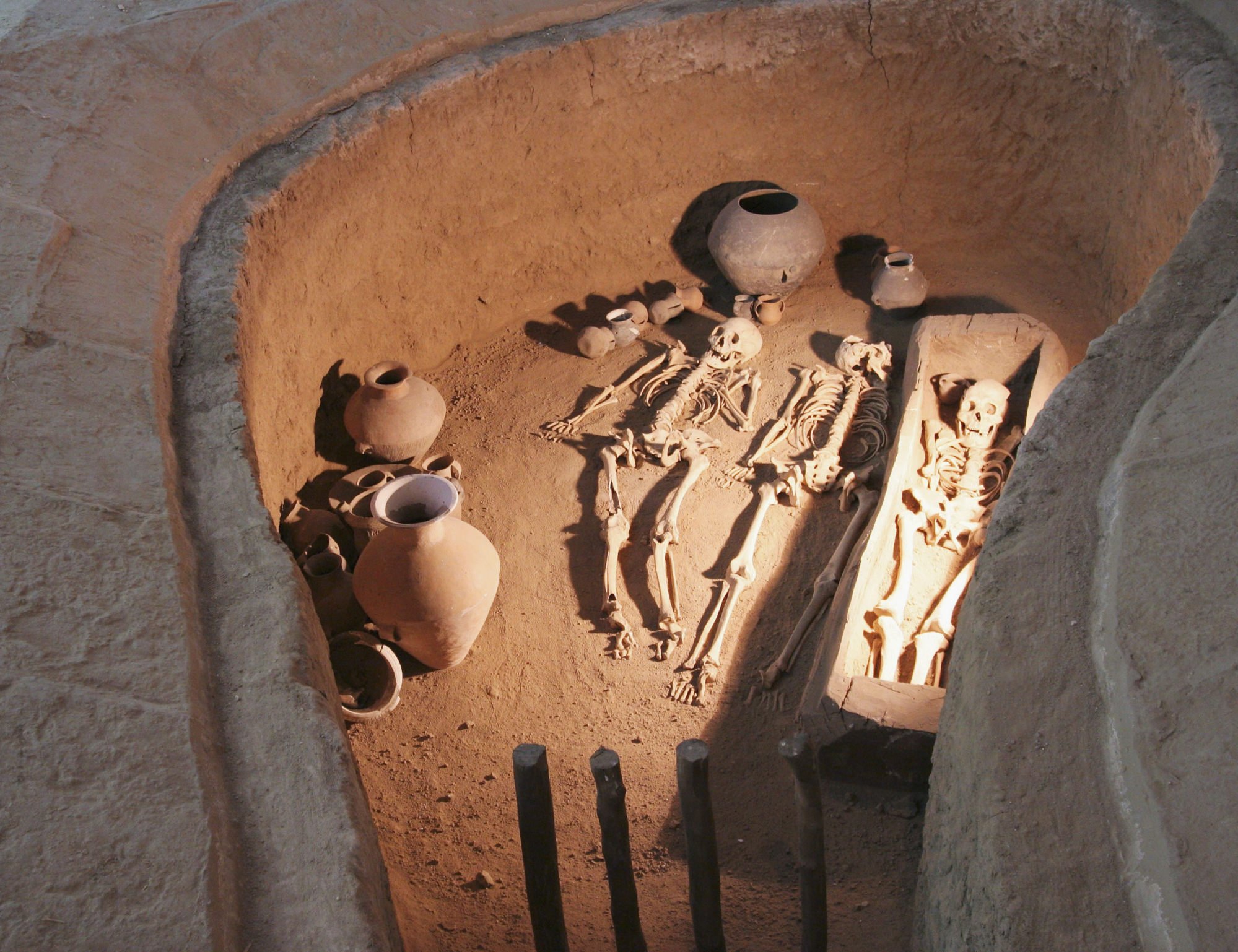
Before burnt paper offerings, Chinese buried ceramic figures with their dead for use in the afterlife
- Once human sacrifice ended, people in ancient China were buried with clay, and later ceramic, miniatures of domesticated animals, servants and household objects
- Today the ceramic ‘sancai’ (three colours) figures of horses, people and objects taken from tombs are seen as highly desirable as ornaments for people’s homes
Recently, I was stopped in my tracks by a beautiful, perfectly proportioned sancai horse standing proudly in a shop window, its right forelimb gracefully raised and its majestic head dipped ever so fetchingly.
To be honest, I was not a fan of sancai (literally “three colours”). I didn’t like the shades of toffee browns and dirty greens that are characteristic of these objects.
The manner in which the colours usually present themselves – treacly rivulets melting into one another, psychedelic daubs and splodges – and the rudimentary, almost rough, application of the glaze discombobulated me.
But there was something about that horse in the window, perhaps its sinewy physicality and irregular coloration coming together, that caught my eye.

I had to move along, after reckoning that my humble abode couldn’t accommodate the size, and price, of the horse.
While it’s widely known that sancai wares originated in the Tang dynasty (619–907), less talked about is their associations with death and burials. Most of the extant sancai ceramics were unearthed from tombs, where they had been placed with the dead for their use in the afterlife.
Why ancient China’s 4 types of royal pardon had nothing to do with mercy
The practice of burying the dead with funerary objects is both ancient and universal. Chinese tombs dating back to the Shang dynasty (around 1600–1050 BC) contain the remains of human and animal sacrifices, as well as ritual bronzeware produced by a technology that was extraordinarily advanced for its time.
Human sacrifice was no longer practised in the subsequent Zhou dynasty (around 1050–256 BC), but ritual bronzes, jades, full-sized horse carriages and equine skeletons have been unearthed from tombs from that period.
From the Han dynasty (202 BC – AD 220) onwards, people began to bury the dead with miniaturised versions of everyday objects made of clay.

The clay burial objects that have been unearthed from that period included models of houses, stables and carriages, as well as figurines of servants and domesticated animals. There were even clay dioramas of life on a farm.
The prosperous Tang dynasty inherited this custom, but elevated it with sancai ceramics that were produced in large quantities for the burial needs of the dead and wealthy. There are three main categories of sancai: human statues, animal figurines and everyday implements.
Sancai depictions of civil and military officials, high-born ladies, servants and entertainers are valuable resources for our knowledge about what people wore at the time, as well as make-up trends and beauty standards (plus-sized women, for example, were considered desirable).
Only 1 ancient Chinese singer could match Taylor Swift’s effect in Singapore
While most of the animal sancai that have been discovered are horses and camels, there were also cows, goats, wild animals like lions and tigers, and mythical creatures that guarded the tombs.
Sets of sancai stationery have been founded, along with everyday items for the home such as vases, lamps and pillows.
By the Song dynasty (960–1279), the internment of clay and ceramic burial objects with the dead person was replaced by the burning of paper effigies.

The modern Chinese tradition of burnt paper offerings for the dead became widespread only around a thousand years ago. I use the word “only”, but when a people’s history is measured in multiple millennia, the Song period is pretty recent.
These have far less aesthetic appeal than sancai, of course, but they serve the same functions: to make the lives of the dead more comfortable, if you believe that, and as ritual therapy for those left behind.











